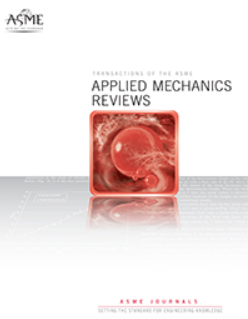考虑边界层进气的飞机推进器进气外形优化
IF 16.1
1区 工程技术
Q1 MECHANICS
引用次数: 1
摘要
航空业的发展凸显了对更具环保意识的航空的需求,导致更省油的飞机概念化。一个概念已经收到了显著的关注,并已与提高燃油效率是边界层摄取(BLI)推进系统,这是指摄取飞机尾流的推进器。虽然理论上BLI已被证明可以减少燃油消耗,但这可能会被扭曲流入时推进器的效率和稳定性降低所抵消。因此,为了减轻BLI对推进系统的影响,必须对发动机进气道进行优化。在这项工作中,为了最大限度地减少发动机进气道的压力损失和畸变,研究了使用自由变形技术和多目标遗传算法相结合的BLI进气道形状优化。在巡航高度约37,000英尺,自由流马赫数为0.7的s -风管进气道上进行了优化。针对该任务,提出了一种优化策略,该策略能够产生具有改善压力恢复和畸变的Pareto最优设计集。优化设计的总体趋势是,为了减少畸变,优化器通过加速流动来减小发动机进气道低总压区域的大小,提高发动机进气道动压。相比之下,通过降低速度以及将最大速度区域移至出口来增加压力恢复,从而减少了进气道内的粘性耗散损失。最终的结果是一个完全自主的优化策略,减少了压力损失,减少了失真,从而实现了更高效率的BLI s导管进气设计。本文章由计算机程序翻译,如有差异,请以英文原文为准。
Aerodynamic Shape Optimization of an Aircraft Propulsor Air Intake with Boundary Layer Ingestion
The growth of the airline industry has highlighted the need for more environmentally conscious aviation, leading to the conceptualization of more fuel-efficient aircraft. One concept that has received significant attention and has been associated with improved fuel efficiency is the boundary layer ingesting (BLI) propulsion system, which refers to the ingesting of the aircraft wake by the propulsors. Although BLI has theoretically been proven to reduce fuel burn, this can potentially be offset by the reduced efficiency and stability experienced by the propulsor in the presence of distorted inflow. Therefore, engine intakes must be optimized in order to mitigate the effects of BLI on the propulsion system. In this work, the shape optimization of a BLI intake is investigated using a free-form deformation technique in combination with a multi-objective genetic algorithm, in order to minimize pressure losses and distortion at the engine inlet. The optimization is performed on an S-duct intake at a cruise altitude of approximately 37,000 feet and a free stream Mach number of 0.7. An optimization strategy was developed for the task which was able to produce a Pareto optimal set of designs with improved pressure recovery and distortion. The general trend of the optimal designs shows that to reduce distortion the optimizer accelerates the flow to reduce the size of the low total pressure region and increase the dynamic pressure at the engine inlet. In contrast, the pressure recovery was increased by reducing velocity as well as shifting the maximum velocity region to the outlet, which reduces the viscous dissipation losses within the intake. The final result is a fully autonomous optimization strategy resulting in reduced pressure losses and reduced distortion leading to higher efficiency BLI S-duct intake designs.
求助全文
通过发布文献求助,成功后即可免费获取论文全文。
去求助
来源期刊
CiteScore
28.20
自引率
0.70%
发文量
13
审稿时长
>12 weeks
期刊介绍:
Applied Mechanics Reviews (AMR) is an international review journal that serves as a premier venue for dissemination of material across all subdisciplines of applied mechanics and engineering science, including fluid and solid mechanics, heat transfer, dynamics and vibration, and applications.AMR provides an archival repository for state-of-the-art and retrospective survey articles and reviews of research areas and curricular developments. The journal invites commentary on research and education policy in different countries. The journal also invites original tutorial and educational material in applied mechanics targeting non-specialist audiences, including undergraduate and K-12 students.

 求助内容:
求助内容: 应助结果提醒方式:
应助结果提醒方式:


